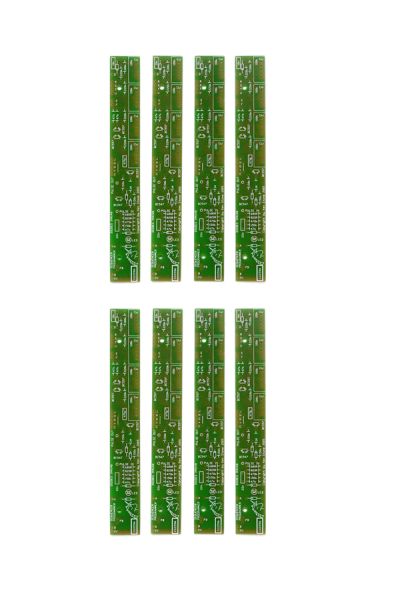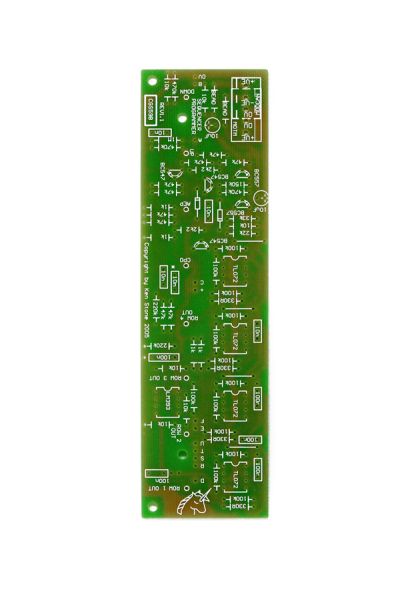CGS59 - 8 Stage Programmer/Sequencer PCB Set | Cat Girl Synth
- Home
- Promotional Categories
- CGS59 - 8 Stage Programmer/Sequencer PCB Set | Cat Girl Synth
CGS59 - 8 Stage Programmer/Sequencer PCB Set | Cat Girl Synth
Special Price
$32.00
Regular Price
$40.00
The Programmer/Sequencer is a Serge inpired multi-stage sequencer. Unlike most sequencers, this one makes no use of binary counters.
This is a PCB only suitable for multiple formats
Note: This is a PCB set that contains eight CGS59A PCB's and one CGS59B PCB
Availability:Out of stock
BrandCat Girl Synth (CGS)
The Programmer/Sequencer is a Serge inpired multi-stage sequencer. Unlike most sequencers, this one makes no use of binary counters. Rather, it uses a set of individual stages, each one directly accessible. As such it could be considered to allow "random access". The first sequencer produced by Serge was a 4017 based counter that put out gate pulses. In order to get a control voltage sequencer, the gate outputs were fed to the input stages of a multi-state programmer. Usually built in groups of four, but sometimes coupled through a switch, these programmers would only allow a single stage to be active at any time, outputting the corresponding control voltages to their bussed output jacks. The stages could be selected either via a gate/trigger input or a panel mounted push button.
This module replicates the programmer, but with one major exception - up and down inputs allow it to be sequenced without connection to an external gate source. Any stage can be activated at any time by a direct pulse or button press. Up or down pulses will then step it from that stage. To limit the number of steps in the sequence, the pulse (gate) output of a stage is simply routed to the external pulse input for the first stage of the sequence. Note that the first stage used in a sequence need not be the first stage on the panel. For example it would be possible to have the first few stages used as an "introduction", with the sequence automatically looping to a stage in the middle of the panel once the sequence's first run was completed.
There is also no theoretical limit to the number of stages that can be used, though I have only tested to a maximum of 10 stages. The maximum number of stages is of course chosen prior to building. The astute will recognise the circuits as having grown from that published in the Synapse article. Make no mistake - it wasn't simply copied. Hundreds of hours of R&D and numerous prototypes were needed to get it right, as the circuit has been taken far beyond its original intentions.
A little on how it works:
Click here for the Schematic
On the schematic, each colored area represents a stage "A" board. The areas in white are the master board and the wiring bus.
Simply put, bus "C" is the output of a current source. This source is capable of holding only one stage on at a time. When a second stage is triggered, it deprives the currently latched stage of current, causing it to reset. In doing so, it removes its load from the current source, allowing the recently triggered stage to remain on.
The up-down function is provided by a dedicated pulse generator in each stage. Only when that stage is active are the pulse generators enabled. Upon receiving an up or down pulse from the corresponding bus, either the next or previous stage will be sent a trigger pulse.
- CPO - Common Pulse Out. (original Serge name. A better name would be 'Button Gate Out') Goes high and remains high while a push button is pushed.
- AEP - All Event Pulse. Gives a trigger pulse on any change of stage.
| Brand | Cat Girl Synth (CGS) |
|---|---|
| Additional Resources | BOM & More Information |



